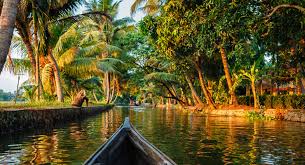Nature’s Abode: Embracing Eco-Tourism and Sustainable Living in India’s Biodiversity Hotspots
Where Nature Meets Responsibility Do you know that India is home to some of the world’s most incredible biodiversity hotspots, teeming with a rich tapestry of flora and fauna? From the lush rainforests of the Western Ghats to the snow-capped peaks of the Himalayas, this incredible nation offers a breathtaking array of natural wonders waiting to be explored sustainably. Get ready to embark on an extraordinary journey through India’s eco-tourism destinations, where every step is a testament to the delicate balance between responsible travel and preserving the sanctity of these natural havens. The Western Ghats – A Tapestry of Life Imagine yourself amidst the lush greenery of the Western Ghats, a UNESCO World Heritage Site that boasts an astonishing diversity of plant and animal life. Prepare to be awestruck by the majestic waterfalls, the misty valleys, and the rich tapestry of flora that adorns this biodiversity hotspot. But wait, there’s more! You’ll be fascinated to learn about the unique eco-tourism initiatives that have been implemented in this region, such as the community-based conservation efforts and sustainable homestays that allow you to immerse yourself in the local culture while minimizing your environmental impact. The Himalayas – Nature’s Towering Sentinels Venture into the towering majesty of the Himalayas, where snow-capped peaks and pristine landscapes beckon adventurers and nature enthusiasts alike. Prepare to be captivated by the breathtaking vistas and the diverse array of wildlife that call this region home, from the elusive snow leopard to the majestic Himalayan black bear. Not only will you have the opportunity to embark on eco-friendly treks and camping expeditions, but you’ll also gain a deeper appreciation for the sustainable practices employed by the local communities, who have mastered the art of living in harmony with their natural surroundings. The Sundarbans – A Mangrove Marvel Immerse yourself in the mystical allure of the Sundarbans, a vast mangrove forest that spans the borders of India and Bangladesh. Prepare to be mesmerized by the intricate network of waterways and the unique biodiversity that thrives within this UNESCO World Heritage Site. You’ll be amazed to learn about the innovative eco-tourism initiatives that allow you to explore this remarkable ecosystem while supporting conservation efforts and promoting sustainable livelihoods for the local communities. The Andaman Islands – Paradise Untouched Journey to the pristine shores of the Andaman Islands, where turquoise waters and lush tropical forests await your arrival. Prepare to be enchanted by the vibrant marine life that calls these islands home, from colorful coral reefs to majestic sea turtles. But wait, there’s more! You’ll be delighted to discover the eco-friendly resorts and sustainable tourism practices that have been implemented to preserve the delicate ecological balance of this paradise, ensuring that future generations can continue to experience its unspoiled beauty. Embracing Responsible Tourism As you delve deeper into India’s eco-tourism destinations, you’ll be inspired by the innovative initiatives and sustainable practices that have been implemented to protect these natural wonders. From community-based conservation efforts to eco-friendly accommodations and responsible waste management, these initiatives are paving the way for a more sustainable future, where tourism and environmental preservation can coexist in harmony. Preserving Nature’s Tapestry As you bid farewell to this captivating journey, remember that India’s biodiversity hotspots are not just natural wonders; they are living tapestries woven with the threads of diverse ecosystems, rare species, and the cultural heritage of local communities. It is our collective responsibility to embrace eco-tourism and sustainable living practices, ensuring that these natural treasures are preserved for generations to come. By supporting responsible tourism initiatives and adopting sustainable practices in our daily lives, we can contribute to the preservation of India’s rich biodiversity and ensure that the tapestry of nature remains vibrant and thriving.









